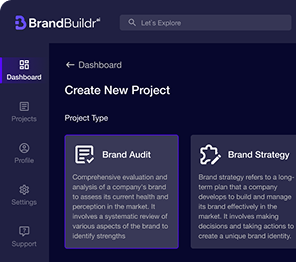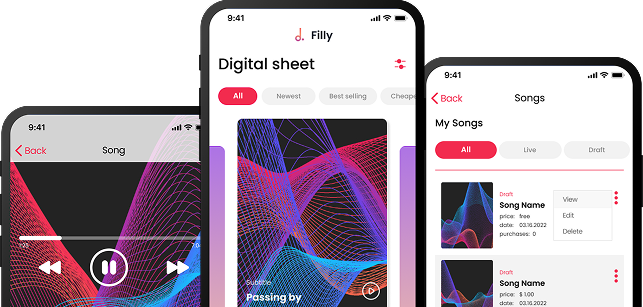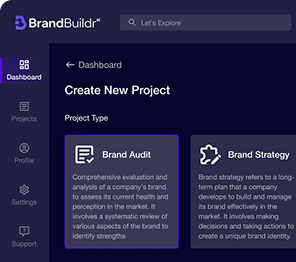Launching a Minimum Viable Product (MVP) is a crucial step for startups aiming to test their product idea in the market. However, building an MVP is just the beginning of the journey. The real challenge lies in validating the product by gathering meaningful feedback from early users.
This process not only helps refine the product but also ensures that the final version aligns with market demands and user expectations. In this article, we’ll explore the best strategies to validate your MVP and how to leverage user feedback for success.

What Does MVP Validation Mean?
MVP validation is the process of assessing whether your product meets the needs of your target audience. It involves testing your core hypothesis, identifying gaps, and refining the product based on user feedback.
Successful validation enables you to:
- Confirm market demand for your product.
- Identify areas for improvement before full-scale development.
- Attract investors by showcasing tangible proof of concept.
- Save time and money by avoiding unnecessary features.
Steps to Validate Your MVP
1. Define Clear Goals
Before launching your MVP, establish measurable goals. These could include:
- User engagement metrics (e.g., sign-ups, time spent on the product).
- Conversion rates (e.g., trial-to-paid conversions).
- Specific feedback on core features (e.g., ease of use, functionality).
Having clear objectives helps you focus on the right metrics and evaluate success effectively.
2. Identify Your Target Audience
Understanding your target audience is essential for meaningful feedback. Consider factors such as:
- Demographics: Age, gender, location, income level.
- Psychographics: Interests, values, pain points.
- Behavioral Patterns: How they might use your product.
Reach out to potential users who align with your target audience and are most likely to benefit from your product.
3. Use Beta Testing
Beta testing allows you to involve real users in the validation process. These users test your MVP in real-world scenarios and provide feedback on:
- Functionality: Does the product work as expected?
- Usability: Is the product intuitive and easy to use?
- Value Proposition: Does the product solve the intended problem?
You can recruit beta testers through platforms like BetaList, Product Hunt, or your existing network.
4. Conduct User Interviews
One-on-one interviews with early users provide deep insights into their experiences. Ask open-ended questions like:
- "What problem were you trying to solve when using our product?"
- "Which features did you find most valuable?"
- "What challenges did you face while using the product?"
- "How does this product compare to alternatives?"
Record these conversations to analyze recurring themes and areas for improvement.
5. Leverage Surveys and Feedback Forms
Surveys are an efficient way to gather feedback at scale. Use tools like Google Forms, Typeform, or SurveyMonkey to create simple surveys. Focus on questions that assess:
- User satisfaction (e.g., "How satisfied are you with the product?").
- Pain points (e.g., "What did you find most frustrating?").
- Feature requests (e.g., "What features would you like to see added?").
Keep surveys concise to encourage higher response rates.
6. Analyze Usage Data
Data analytics tools can reveal how users interact with your MVP. Key metrics to track include:
- User Onboarding: Are users completing the signup process?
- Feature Engagement: Which features are used most frequently?
- Churn Rates: How many users stop using the product, and why?
Tools like Google Analytics, Mixpanel, or Amplitude can help you collect and analyze these metrics.
7. Create Feedback Loops
Establish a continuous feedback loop to stay connected with your early users. Here’s how:
- Follow-Up Emails: Ask users about their experience after a set period.
- Feedback Portals: Set up a platform where users can share suggestions (e.g., UserVoice).
- Community Forums: Engage users in discussions through platforms like Slack or Discord.
Maintaining a feedback loop fosters a sense of community and encourages users to contribute to the product’s development.
8. Conduct A/B Testing
A/B testing involves presenting users with two variations of a feature or design to determine which performs better. For example:
- Test two different onboarding flows to see which leads to higher completion rates.
- Experiment with feature placement to improve engagement.
A/B testing tools like Optimizely or VWO can help you make data-driven decisions.
9. Observe User Behavior
Sometimes, users may not articulate their pain points directly. Observing how they interact with your product can uncover hidden issues. Tools like Hotjar or Crazy Egg provide heatmaps and session recordings that show:
- Where users click or tap.
- Where they drop off in the user journey.
- Which elements they ignore or struggle with.
10. Iterate and Improve
Validation is an iterative process. Use the feedback and insights gathered to make incremental improvements. Prioritize changes based on:
- The severity of the issue.
- The impact on user experience.
- The alignment with your product’s core goals.
After implementing updates, repeat the validation process to ensure the changes are effective.

Challenges in MVP Validation
1. Biased Feedback
Users may provide feedback based on politeness rather than honesty. Encourage candid responses by assuring them that their input is valuable and will directly influence the product.
2. Limited Sample Size
A small user base may not represent your entire target market. Address this by diversifying your testers and reaching out to users across different demographics.
3. Balancing Feedback
Not all feedback will be actionable or relevant. Focus on recurring themes and prioritize feedback that aligns with your long-term vision.


Case Studies: MVP Validation Done Right
Dropbox
Dropbox validated its MVP with a simple explainer video showcasing the product’s concept. This approach gauged interest and attracted early adopters before a single line of code was written.
Zappos
Zappos started by selling shoes online without holding inventory. Founder Nick Swinmurn validated the idea by sourcing shoes from local stores and shipping them to customers, proving the demand for an online shoe store.
Slack
Slack launched an early version of its messaging platform to a small group of companies. Feedback from these users helped refine the product’s usability and feature set, setting the stage for its widespread success.
Key Metrics for MVP Validation
Tracking the right metrics is essential for effective MVP validation. Some key metrics include:
- Net Promoter Score (NPS): Measures user satisfaction and likelihood of recommending the product.
- Customer Retention Rate: Indicates whether users find ongoing value in the product.
- Activation Rate: Tracks how many users complete a key action (e.g., setting up an account).
- Churn Rate: Measures the percentage of users who stop using the product.
- Feedback Sentiment: Categorizes feedback into positive, neutral, or negative to assess overall sentiment.
Validation is the bridge between an idea and a product that truly resonates with users — listen, iterate, and grow.


Conclusion
Validating your MVP is a pivotal step in turning your product vision into a market-ready solution. By actively engaging early users, collecting meaningful feedback, and making data-driven iterations, you can refine your product to meet real user needs and expectations. This process not only enhances your product’s chances of success but also strengthens trust with both users and potential investors.
At Codebdidge, we specialize in helping businesses navigate the MVP validation process. Whether it’s designing user feedback loops, analyzing key metrics, or implementing iterative improvements, our team is here to support your journey.
Let’s bring your product to life! Explore our MVP Development Services or schedule a consultation to see how we can help you validate and refine your MVP effectively. Contact us today to take the first step toward building a product that your users will love!
FAQ
Why is validating your MVP with early users so important?
Validating your MVP helps confirm that your product solves a real problem. Early user feedback reveals usability issues, unmet needs, and feature priorities, allowing you to improve the product before investing in full-scale development and marketing.
Who are the best early users to test an MVP?
The best early users are people who closely match your target audience and actively experience the problem your MVP aims to solve. These users provide relevant, actionable insights because they are genuinely motivated to see the product succeed.
What methods can startups use to gather MVP feedback effectively?
Common methods include in-app surveys, user interviews, usability testing sessions, analytics tracking, feedback forms, and beta testing programs. Combining qualitative feedback with usage data provides a clear understanding of how users interact with your MVP.
Which metrics should you track when validating an MVP?
Key metrics include user engagement, retention rate, churn, task completion, conversion rate, and customer satisfaction. These metrics indicate whether users find value in the MVP and help guide future product decisions.
How should teams analyze and prioritize MVP feedback?
Teams should categorize feedback by impact and frequency, focusing first on issues that affect core functionality and user experience. Prioritizing changes that align with business goals ensures improvements deliver measurable value.
What should you do after collecting feedback from MVP users?
After collecting feedback, teams should iterate quickly—fixing critical issues, refining features, and updating the product roadmap. Communicating improvements back to early users builds trust and encourages continued engagement with the product.
Heading 1
Heading 2
Heading 3
Heading 4
Heading 5
Heading 6
Lorem ipsum dolor sit amet, consectetur adipiscing elit, sed do eiusmod tempor incididunt ut labore et dolore magna aliqua. Ut enim ad minim veniam, quis nostrud exercitation ullamco laboris nisi ut aliquip ex ea commodo consequat. Duis aute irure dolor in reprehenderit in voluptate velit esse cillum dolore eu fugiat nulla pariatur.
Block quote
Ordered list
- Item 1
- Item 2
- Item 3
Unordered list
- Item A
- Item B
- Item C
Bold text
Emphasis
Superscript
Subscript





















.avif)



.avif)

.avif)


